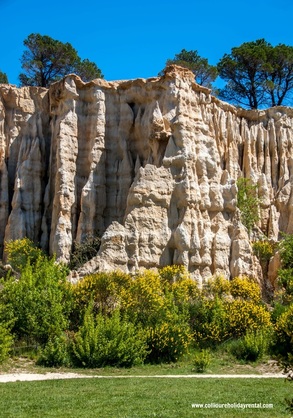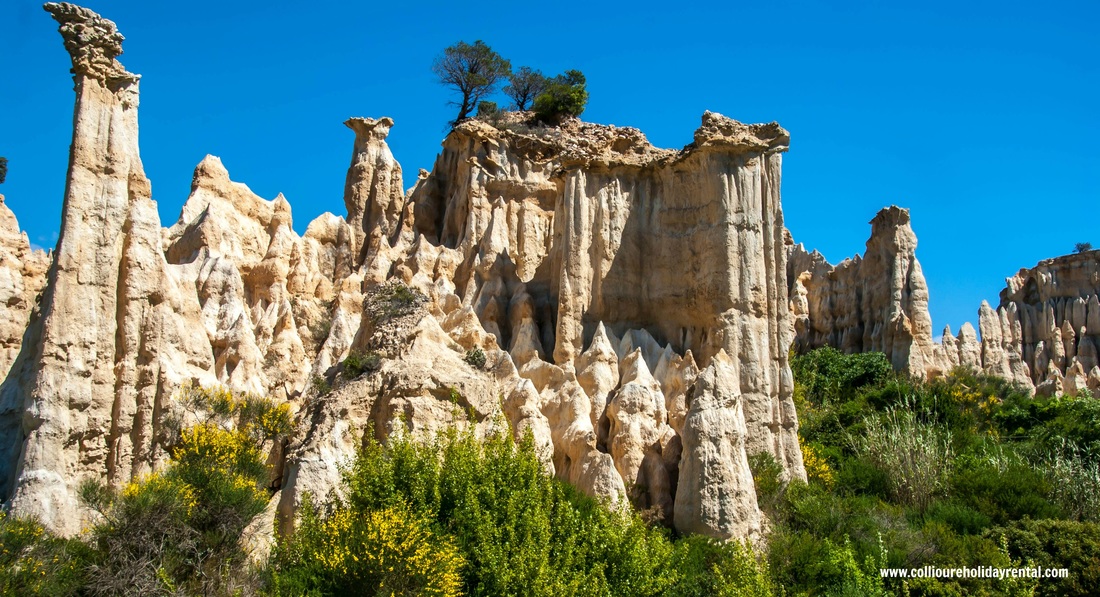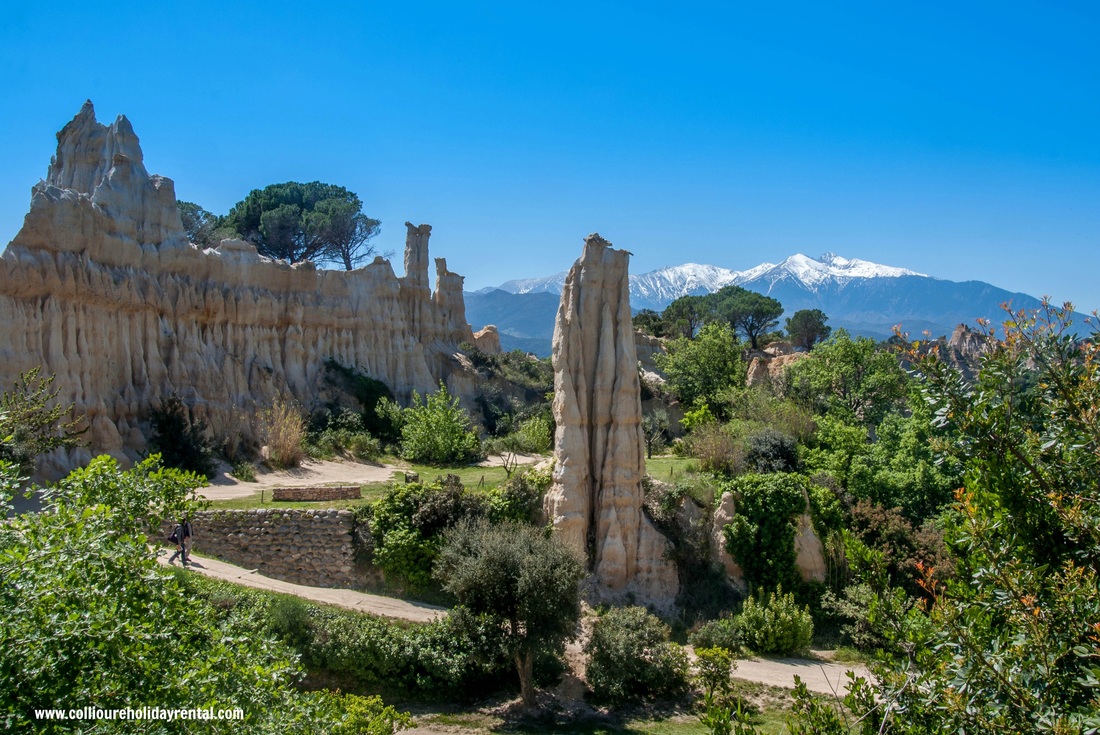
If you are looking for something interesting to do one day – a 45-minute drive from Collioure are the Orgues of Ille Sur Tet. These fascinating sand formations resembling organ pipes are really worth visiting.
Just outside town is the natural site that spreads out in the shape of an amphitheatre. The gigantic columns (also known as hoo doos) reach up 10-12 metres high and while they look frozen in time, they are actually constantly changing. Every time it rains, large quantities of sand is being washed away resulting in some of the shapes disappearing and others forming.
This place is an erosion masterpiece. Millions of years ago the area was originally a hill and as you look up at the tops of the columns, you can see the hard rock layer called chimneys, and envision how much actual material has been removed over the years. The rock caps provide a protective layer that eventually deteriorates and causes the column to collapse.
Rain is of course a detriment to the formations – it is a good thing there is not a lot of rain in this region. Another factor that impacts the site is periods of heat and moisture causing the clay rocks to swell and contract like sponges. This causes cracks in the sides resulting in additional erosion.
The site is well maintained and has been established as a protected natural monument. This designation assures that continued preservation of the site is undertaken.
We found this geological formation to be fascinating. Since it is literally disappearing – make sure you visit soon!
Just outside town is the natural site that spreads out in the shape of an amphitheatre. The gigantic columns (also known as hoo doos) reach up 10-12 metres high and while they look frozen in time, they are actually constantly changing. Every time it rains, large quantities of sand is being washed away resulting in some of the shapes disappearing and others forming.
This place is an erosion masterpiece. Millions of years ago the area was originally a hill and as you look up at the tops of the columns, you can see the hard rock layer called chimneys, and envision how much actual material has been removed over the years. The rock caps provide a protective layer that eventually deteriorates and causes the column to collapse.
Rain is of course a detriment to the formations – it is a good thing there is not a lot of rain in this region. Another factor that impacts the site is periods of heat and moisture causing the clay rocks to swell and contract like sponges. This causes cracks in the sides resulting in additional erosion.
The site is well maintained and has been established as a protected natural monument. This designation assures that continued preservation of the site is undertaken.
We found this geological formation to be fascinating. Since it is literally disappearing – make sure you visit soon!


 RSS Feed
RSS Feed